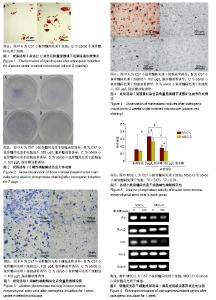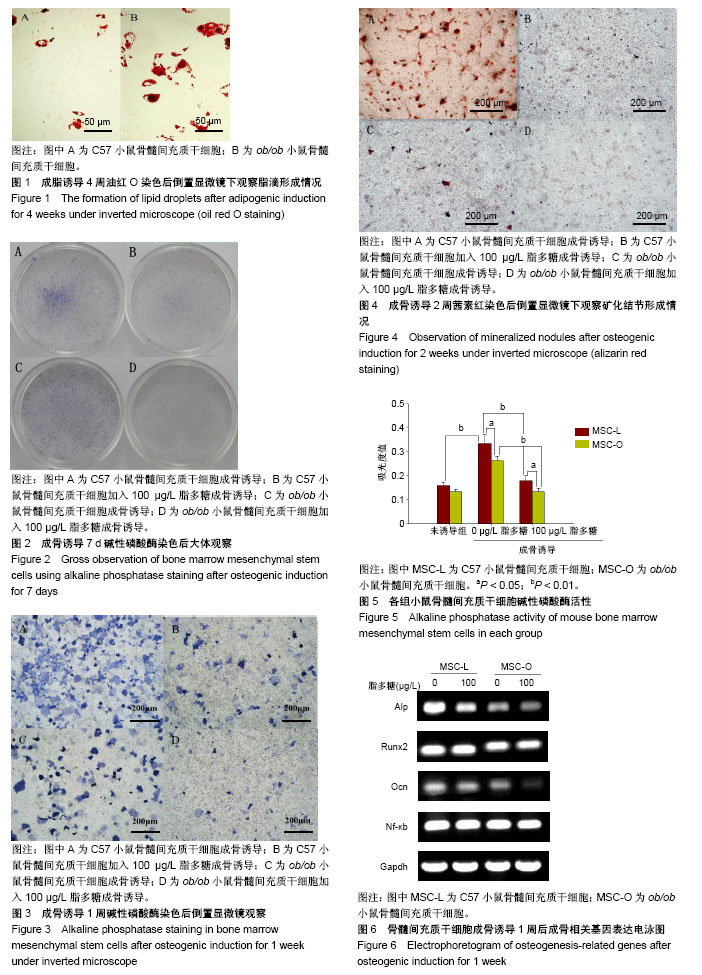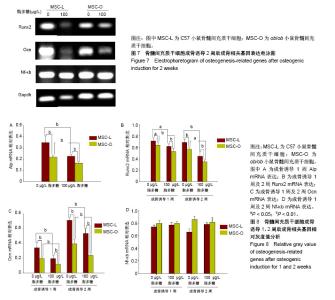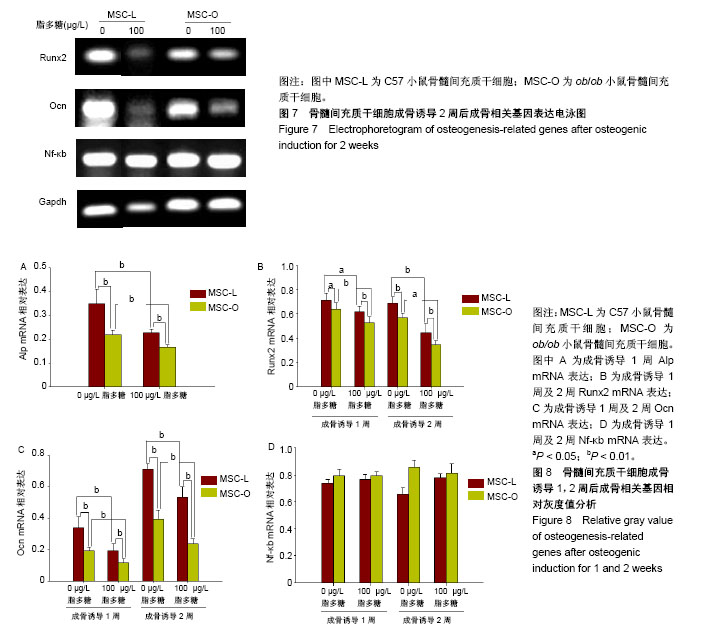| [1] 闫美玲,夏丽莎,胡长平. 代谢炎症与肥胖相关研究进展[J]. 中国动脉硬化杂志, 2015,23(6): 634-638.[2] 熊均平,孔亚阁,杨旭. 肥胖与慢性牙周炎相关性临床研究[J]. 实用口腔医学杂志, 2015,31(2):259-261.[3] Scheller EL, Song J, Dishowitz MI, et al. Leptin functions peripherally to regulate differentiation of mesenchymal progenitor cells. Stem Cells. 2010;28(6):1071-1080.[4] Reseland JE, Syversen U, Bakke I, et al. Leptin is expressed in and secreted from primary cultures of human osteoblasts and promotes bone mineralization. J Bone Miner Res. 2001;16(8): 1426-1433.[5] Bandow K, Maeda A, Kakimoto K, et al. Molecular mechanisms of the inhibitory effect of lipopolysaccharide (LPS) on osteoblast differentiation. Biochem Biophys Res Commun. 2010;402(4): 755-761.[6] 王海燕. 脂多糖刺激单核巨噬细胞培养上清液对成骨细胞成骨特性的影响[J]. 中华口腔正畸学杂志, 2011,18(2):92-96.[7] Lawrence CB, Brough D, Knight EM. Obese mice exhibit an altered behavioural and inflammatory response to lipopolysaccharide. Dis Model Mech. 2012;5(5):649-659.[8] Zhang Y, Proenca R, Maffei M, et al. Positional cloning of the mouse obese gene and its human homologue. Nature. 1994; 372(6505): 425-432.[9] Sanigorski A, Cameron-Smith D, Lewandowski P, et al. Impact of obesity and leptin treatment on adipocyte gene expression in Psammomys obesus. J Endocrinol. 2000;164(1):45-50.[10] 胥丹妮,林晓萍. 脂肪因子对牙周炎症组织影响机制的研究[J]. 口腔医学, 2017,37(10): 932-936.[11] 苏媛,吕影涛,张雪洋,等. 肥胖复合牙周炎大鼠骨骼肌中瘦素受体表达的组织学研究[J]. 口腔疾病防治,2017,25(12): 774-778.[12] Hamrick MW, Pennington C, Newton D, et al. Leptin deficiency produces contrasting phenotypes in bones of the limb and spine. Bone. 2004;34(3):376-383.[13] Ulevitch RJ, Tobias PS. Receptor-dependent mechanisms of cell stimulation by bacterial endotoxin. Annu Rev Immunol. 1995; 13:437-457.[14] Pober JS, Sessa WC. Evolving functions of endothelial cells in inflammation. Nat Rev Immunol. 2007;7(10):803-815.[15] Tominari T, Hirata M, Matsumoto C, et al. Polymethoxy flavonoids, nobiletin and tangeretin, prevent lipopolysaccharide-induced inflammatory bone loss in an experimental model for periodontitis. J Pharmacol Sci. 2012;119(4):390-394.[16] 唐琪,王仁飞,陈莉丽. 实验性牙槽骨吸收动物模型的建立[J]. 浙江实用医学, 2008,13(1):11-12,25.[17] Zhou CC, Xiong QC, Zhu XX, et al. AFF1 and AFF4 differentially regulate the osteogenic differentiation of human MSCs. Bone Res. 2017;5:17044.[18] 赵永杰,付至江,谭伟光,等. 影响MSCs向成骨与成脂肪分化因素的研究进展[J]. 中国骨质疏松杂志, 2015,21(10): 1272-1276.[19] Liu R, Liu J, Guo L, et al. Effect of different proportions of bone marrow mesenchymal stem cells and endothelial cells on osteogenesis. Zhonghua Kou Qiang Yi Xue Za Zhi. 2015;50(11): 675-680.[20] Ducy P, Zhang R, Geoffroy V, et al. Osf2/Cbfa1: a transcriptional activator of osteoblast differentiation. Cell. 1997;89(5):747-754.[21] 李庆庆,王大平,熊建义,等. Runx2重组慢病毒感染骨髓间充质干细胞并促进其成骨分化的研究[J]. 中国临床解剖学杂志, 2015, 33(3): 311-315.[22] Komori T. Regulation of bone development and extracellular matrix protein genes by RUNX2. Cell Tissue Res. 2010;339(1): 189-195.[23] 刘红,廖二元,伍贤平. 骨钙素与代谢性骨病[J]. 国外医学(内分泌学分册), 2004, 24(4): 239-240,249.[24] 张振宇,韩一生,毕龙,等. 降钙素相关肽诱导SD大鼠骨髓间充质干细胞成骨分化的机制[J]. 现代生物医学进展, 2010,10(24): 4606-4611. |



